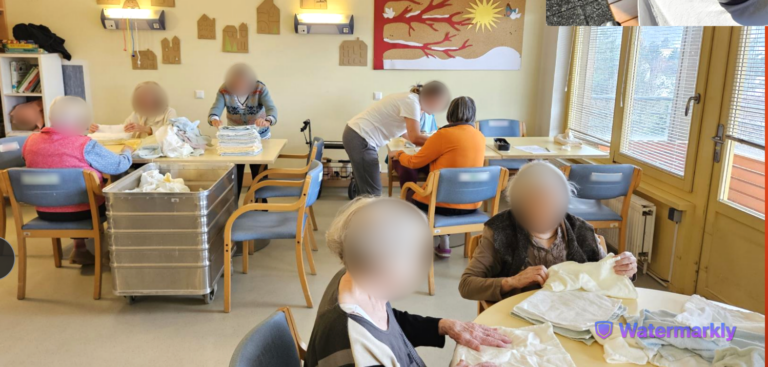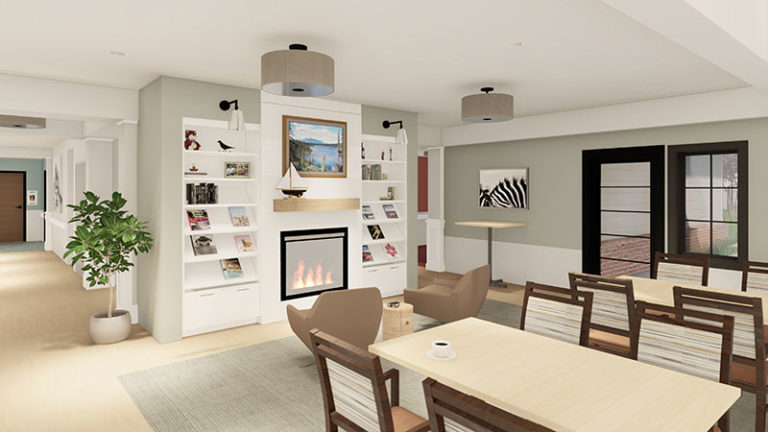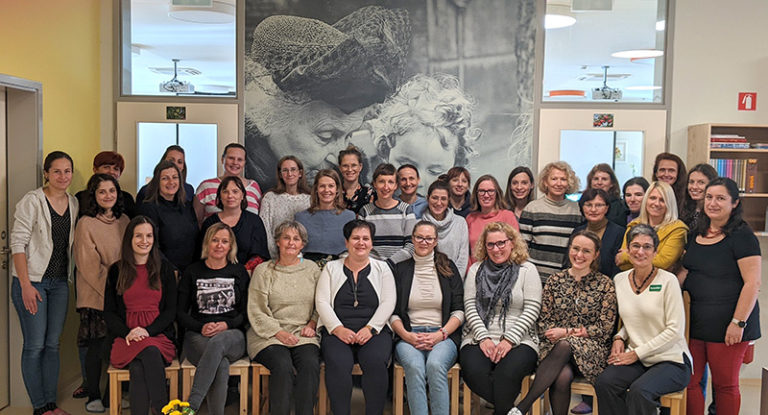Adopting the Montessori Approach, A Care Community in Transition
| by Grace Hicks, MT-BC, Certified Montessori Elder Care Practitioner Music Therapist and Program Coordinator at Adelaide of Newton-Centre, a Benchmark Community In my time participating in this Montessori class, my community has literally changed around me. Down went tall, unreachable bookshelves full of tan books about men I’ve never heard of, and up went colorful, large print books, brooms that say “help clean your community,” and signs directing people to the dining room. Some changes had good reactions – when memory books started showing up on the shelves our family members and residents loved them! Other changes were not as well received, with people asking “Why is my mother paying this much each month to fold napkins?” Part of what I learned throughout the course of this class is how to answer that question. |
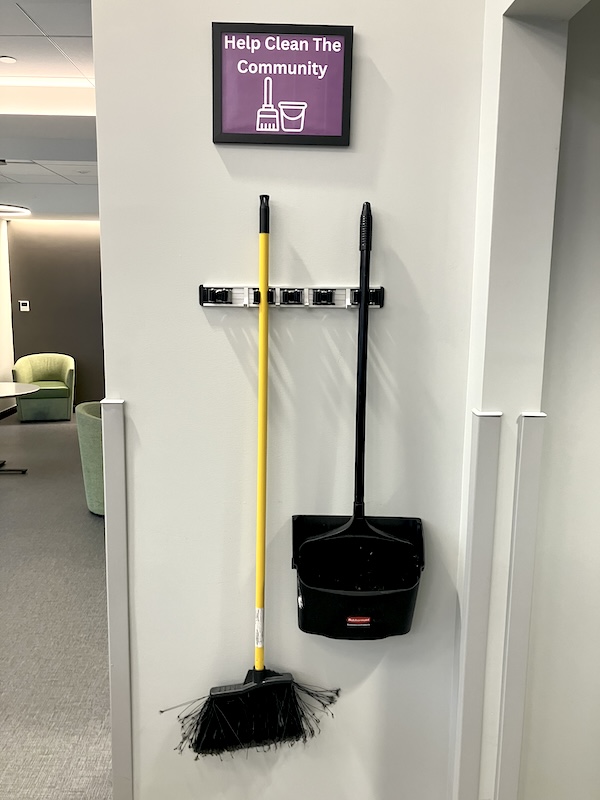
I do think it’s a good question to ask. Most people don’t dream of folding napkins, sweeping floors, or folding laundry long into their retirement. What I’ve had to learn to explain to people is how much those things matter. That no human can really flourish when there is nothing for them to do for themselves or others. This is perhaps my biggest take away from incorporating the Montessori approach into my community. That every time I put on a resident’s jacket for them without first giving them an opportunity to try themselves, I am taking something from them. The opportunity to practice their activities of daily living (ADLs), maintaining their fine and gross motor skills, their organizing processes, but also to achieve something for themselves.
There were many challenges in starting to incorporate Montessori into my community and activities, many of which I am still working through. Perhaps the largest was the inherent difficulty in working in an industry which has been organized to take autonomy from the people within it. I love the community I work in, and I think the staff are remarkable! But it is ultimately true that people are here because they are losing their autonomy, and many of the structures within my community are there to ease that process. Creating structures to increase autonomy felt, in many ways, contrary to a lot of the existing work being done.
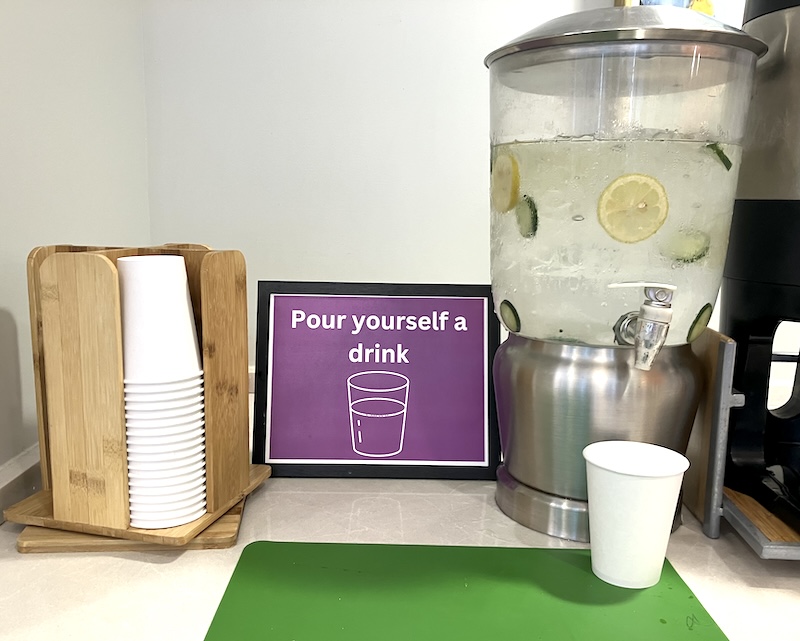
As an example, we are working towards more autonomy and choice in dining. Prior to the implementation of the Montessori program, our residents received a pre-chosen meal, served to them. This was done with the rationale that choice-making was difficult and stressful for many residents and That every time I put on a resident’s jacket for them without first giving them an opportunity to try themselves, I am taking something from them. The opportunity to practice their activities of daily living (ADLs), maintaining their fine and gross motor skills, their organizing processes, but also to achieve something for themselves.
| Where I think we could be, with more effort and dedication on the part of myself and my community, involves colorful menus of the “always available” options to increase accessibility. It involves trying out community-style serving so residents can choose their own portions. It involves residents with the role of server or sous-chef or table-setter. Obviously, this is ambitious. I can already see community-style dining turning into a massive disaster. But I also think it’s important to try. To not make assumptions about the abilities of my residents without giving them a chance to show me what they can do first. I believe that this is at the heart of the Montessori philosophy. The idea that by making accessibility changes in the environment around our residents we can increase their independence, their sense of community, and ultimately their quality of life. Another challenge arising from the context in which I’m working involved our radios. Our staff carries radios to communicate with one another, as well as to hear the 10 minute cycle where the radios announce which doors are open and have been held open. It’s ultimately a good thing, because it allows us to know if any of our residents are in danger. However, it does make Montessori activities difficult. One resident I was working with, AS, experiences significant anxiety that can be triggered or worsened by intrusive and repetitive noises. A radio that goes off every 10 minutes (to say roughly the same thing each time) was a significant trigger for her. As part of the Montessori program, we invested in ear pieces for all of our radios. It is amazing how noticeable silence can be. It didn’t take away AS’s anxiety or eliminate disturbing stimuli for the community, but it did eliminate one of the biggest environmental barriers we were facing. A last challenge I would like to address is inherent to the very nature of our work: decline. One of my residents, EB, went from able to walk, read, and draw with a minimum of cuing to a point where she can barely achieve any of the above on a good day. It is challenging emotionally – it’s hard to watch someone lose functionality that they used to have, to be unable to engage with their hobbies in ways that they used to. However, this too, I believe to be incorporated in the Montessori philosophy. When doing Montessori for children, it is implied that most children will over time increase their independence, their ability, their number of skills. Obviously, people with dementias can still learn and progress, but there is a largely unspoken acknowledgement that for every person we work with, over time they will lose independence, lose ability. The fact that this is incorporated into the Montessori assessment and planning is invaluable. When EB first lost the ability to paint independently, we moved to the more supported version in our Montessori assessment, water painting. Easier control for error, less resources to manage, less supervision required. From there we made more and more adjustments, from accessible brushes to increased signage to teaching others to talking about painting. Nowadays, EB engages with her love of art by watching others paint, listening to books about art, and by listening to people talk about painting. She may not be able to hold a brush or to communicate clearly with others, but through the Montessori philosophy we have kept that interest alive for her. While her abilities have declined, her passions have not. |
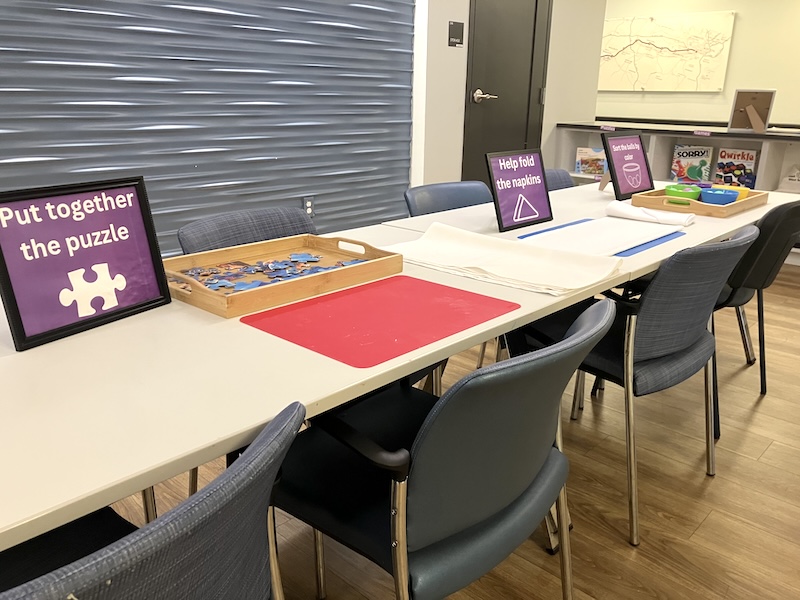
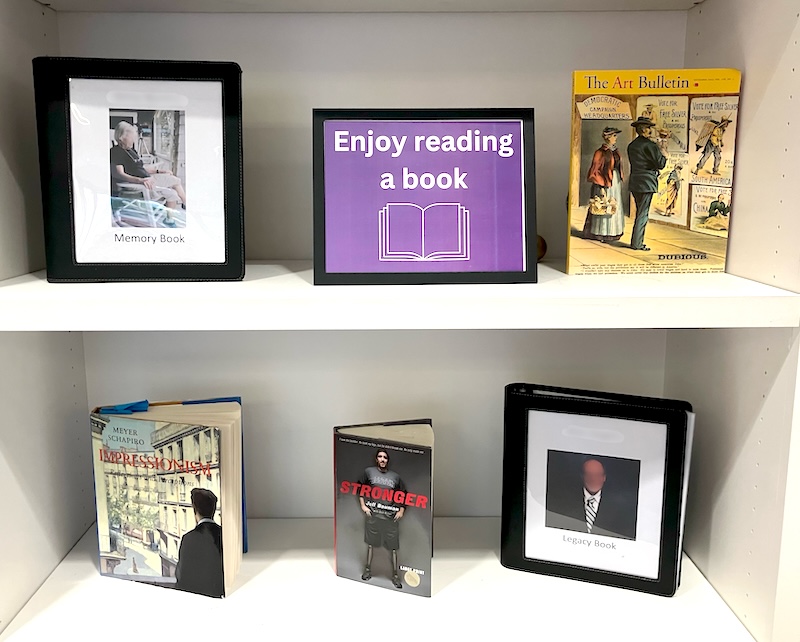
| There have been great successes for many of our residents in incorporating the Montessori philosophy. As I mentioned earlier, memory books have been a huge success in our community. There are families who go through it with their loved ones every time they visit. What surprised me most is that there are several residents who enjoy going through others’ memory books. It has been challenging to keep up with new residents coming in, but the response we get from families and residents is definitely worth it. Another victory I had was using spaced retrieval with AS. When she gets anxious, AS asks herself a lot of questions, chief among them is “When is J. coming?” So, following our spaced retrieval unit, I practiced answering the question “J. comes at dinner” with AS. I knew it was working when I heard her, in a moment of anxiety, ask herself “When is J. coming? J. comes at dinner.” The fact that she was able to answer that question herself, hopefully relieving at least some anxiety, was a huge success for me as an aspiring Montessori practitioner. One last success to cover is a woman I have not talked about, who I will call EH. EH is a very kind, family-oriented woman, but who through the progression of her disease has experienced frequent anger and paranoia. She does not consider this place to be her home and often spends her evenings becoming increasingly aggravated as she tries to find the exit. We found that folding her own laundry in the evenings calmed her and almost completely resolved the cognitive dissonance involved in trying to get home. Now, when she starts to become upset or exit-seeking, we take her over to the laundry station and have her help fold and put away her laundry. It tells her that her clothes are here, so this must be her home. It allows her to fill a role that, until moving, she has filled for her entire life. Overall, I know that Montessori has made a positive impact on our community. Especially for the two residents I was working with in particular, but also for the 58 other residents living here that benefited from environmental changes we made. I know we still have a long way to go, but the difference in our community is tangible. Families and friends have made it a point to let me know how much more they appreciate the programming now that we are incorporating Montessori values. Residents are more engaged, more independent, and most importantly, more empowered. Thank you, Grace, for granting us permission to share this essay. We are very proud of the work you and your colleagues are doing to improve the lives of elders! |

